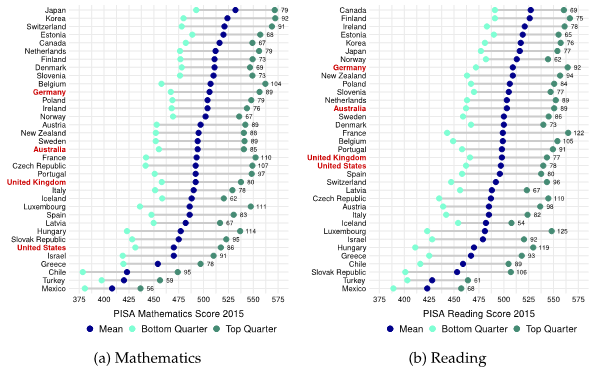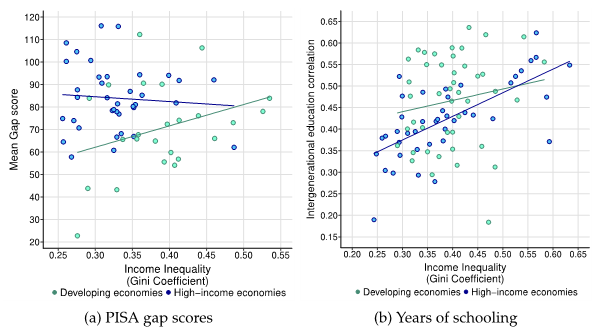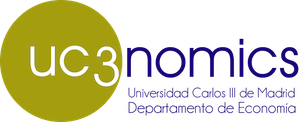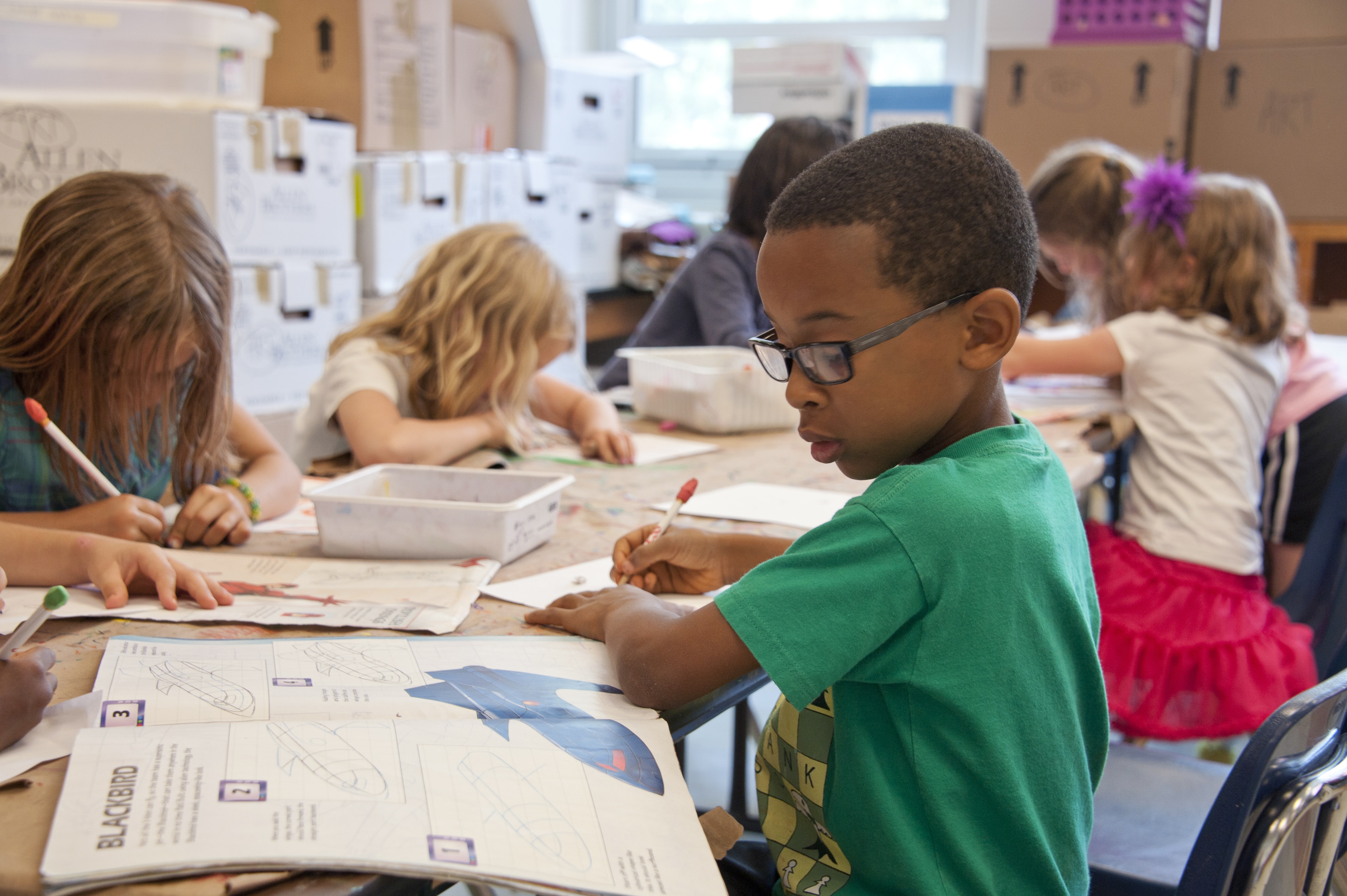What are the causes and consequences of unequal education, and what are the likely repercussions of the global pandemic on educational inequality?
By Jan Stuhler
Based on research by Jo Blanden, Matthias Doepke and Jan Stuhler.
In modern economies, people’s livelihoods are based, in large part, on skills acquired through education. The importance of such skills has steadily increase over time. In high-income countries, large fractions of recent cohorts continue their studies through higher education and spend a substantial part of their lives enrolled in school and university. This implies that unequal education can be a driver of inequality in the labour market as well as low social mobility across generations.
Recently, the debate on the causes and consequences of educational inequality has been amplified by the widespread school closures during the Covid-19 pandemic. Such school closures are likely to impact children from different socio-economic backgrounds differentially and may have put children from low-income families at a particular disadvantage (Goldhaber et al. 2022).
What do we know about educational inequality? In a new chapter of the Handbook of the Economics of Education, Jo Blanden (University of Surrey), Matthias Doepke (London School of Economics) and Jan Stuhler (UC3M) review evidence on how family background shapes differences in educational outcomes, discuss mechanisms and the potential role of policy and study the likely consequences of the Covid-19 pandemic on educational inequality.
Evidence on Educational Inequality
One first important observation is that educational inequality is vast. Figure 1 compares average scores from the 2015 wave of the OECD’s Programme for International Student Assessment (PISA) by country to the average scores for children from families in the top and bottom quarters of a measure of socioeconomic status. The socio-economic gap in test scores amounts to almost a standard deviation. Even in the best-performing countries, the scores of students from disadvantaged backgrounds are below the OECD average.
These large socioeconomic gaps imply that educational inequality is key in reproducing inequality from one generation to the next. Economic inequality contributes to large gaps in the investments that parents from different parts of the income distribution make in their children’s education. Given high economic returns to education, educational inequality, in turn, implies economic inequality and low social mobility.
Indeed, the “Great Gatsby Curve” shows that countries with more income inequality also tend to have lower income mobility (Corak 2013, Blanden 2013), and a similar association is observed across regions within country (Chetty et al. 2014, Güell et al. 2018). This pattern is also reason to be concerned about future social mobility. Income inequality has been rising in many countries, and the Great Gatsby Curve suggests that this might result in lower social mobility and an economically divided society in the future. But how likely is such an outcome of ever-lower social mobility?

Figure 1: PISA scores by country and socio-economic background.
Notes: The figure reports the mean PISA 2015 results for OECD countries and the mean scores in the top and bottom quar-ters of the PISA index of economic, social, and cultural status (ESCS). The numbers refer to the gap between the mean scores in the top and bottom quarters for each country. Source: OECD (2016)
The Educational Great Gatsby Curve
To understand this link between inequality and low social mobility, one should first consider the link from economic to educational inequality. Conceptually, there are good reasons to expect economic inequality to increase educational inequality. By raising the stakes, it spurs well-off parents to double down on investing money and time in their children, while those of lesser means may not be able to keep up.
Indeed, there is evidence of rising socio-economic gaps in parental investments in recent decades (Doepke and Zilibotti, 2019). In the United States, upper-middle-class parents have increased their time and money investments in children compared to less fortunate families. However, even though gaps in inputs have risen, the evidence for gaps in outputs is less clear. For example, socio-economic gaps in test scores in the United States appear to have been broadly stable over the past few decades (Hanushek et al. 2020).
This tension motivates us to look for evidence of an “Educational Great Gatsby Curve“: do more unequal countries also display greater educational inequality? In terms of educational attainment (e.g., years of schooling), there is indeed a clear relationship: as shown in the right panel in Figure 2, more unequal countries have lower intergenerational mobility in schooling in both developing and high-income economies. But the relationship between income inequality and test scores is less clear: as shown in the left panel of Figure 2, more inequality is not systematically related to larger socio-economic gaps in test scores.

Figure 2: The Educational Great Gatsby Curve.
Notes: Scatter plot of the 2012 World Bank Gini (or nearest available year) against the gap in average 2015 PISA scores in reading and mathematics between the top and bottom quarters of socio-economic background (Source: OECD 2016) in Panel (a) and of the intergenerational correlation in parents’ highest and child’s years of schooling (Source: Global Database on Intergenerational Mobility, The World Bank 2018) in Panel (b).
One way to reconcile these trends is that investments of well-off parents run into strongly diminishing returns, while the investments of less fortunate parents are highly productive. Then, rising investment gaps are consistent with stable achievement gaps. But even for given achievement, well-off parents may find other ways to give their children a leg up – and hence, the Great Gatsby Curve in educational attainment. From this point of view, there is indeed reason to be concerned about the future of social mobility, even if the test score gaps remain stable.
Amplifying this concern is that simple summary statistics, such as the parent-child correlation in schooling, may understate the true persistence of educational advantages from one generation to the next. Years of schooling is only a coarse measure of learning, which abstracts from achievement gaps between students attending the same grade and from horizontal segregation in institutional quality (Chetty et al., 2017) or field of study (Hällsten and Thaning, 2018).
Educational Inequality across Multiple Generations
Indeed, recent studies tracking multiple generations imply that persistence is higher than indicated by conventional parent-child correlations in years of schooling. One way to show this is to note that the outcome of other ancestors remains predictive of child education, even after conditioning on parent education (e.g., Lindahl et al. 2015, Braun and Stuhler 2018, Anderson, Sheppard, and Monden 2018, Adermon, Lindahl and Palme 2021).
The conclusion that parent-child correlations understate the role of family background is also consistent with earlier evidence from sibling correlations (Björklund and Salvanes 2011, Björklund and Jäntti 2012) or recent studies of regression to the mean on the surname level (Clark 2014 and Barone and Mocetti 2020).
Educational Policy
While educational inequality might be quite persistent, the literature is also clear about the fact that policy matters. None of these patterns and trends are unchangeable laws of nature, but they are contingent on policy choices for early childhood education, schooling and higher education, and family support.
This does not mean, however, that it is straightforward to design simple policies that comprehensively counteract educational inequality. Some of the most obvious policy instruments, such as increasing school funding or instruction hours, appear to have only modest effects (e.g., Jackson and Mackevicius 2021). Other inputs, such as teacher quality, appear more important but are also less directly malleable by policy.
Given the role of economic inequality, our chapter also revisits how financial constraints affect attendance in higher education. One important insight is that student loans cannot fully eliminate the investment gap between children from families with more and fewer resources.
The Effect of the Covid-19 Pandemic on Educational Inequality
The final part of our chapter addresses the impacts of the Covid-19 pandemic on educational inequality. Ninety-four percent of the world’s student population was affected by school closures in the spring of 2020 (UNESCO), which often lasted for months and, in some cases, for more than a year.
School closures impact children from different socio-economic backgrounds differentially for two reasons. First, the incidence of school closures varied by social background, for instance, when public schools close while private schools attended by richer families stay open. Second, children from disadvantaged backgrounds might experience greater learning loss if their school closes, as the ability of parents or peers to compensate is likely to differ across families. In particular, the ability of low-income parents to respond is hampered by the fact that they are much less likely to have jobs that can be done from home.
The evidence so far indeed shows that pandemic school closures have increased educational inequality. For example, Engzell, Frey, and Verhagen (2021) find that in the Netherlands, eight weeks of online rather than in-person learning led to 0.08 of a standard deviation lower test scores for students aged eight to 11. The impact is 40 percent larger among those in the least educated homes, suggesting that the pandemic not only increased educational inequality but that disadvantaged children’s skills actually deteriorated.
Given that the consequences of the pandemic are ongoing, the empirical literature has so far been able to quantify only a subset of the potential channels via which it will affect educational inequality. However, learning is a cumulative process, where learning losses at one life stage may be difficult to compensate for later in life. To examine the potential long-run repercussions of the crisis, recent studies draw on structural modelling that is disciplined by both current and pre-pandemic data (Jang and Yum 2020, Fuchs-Schündeln et al. 2021, and Agostinelli et al. 2022). These studies suggest that unless there is a strong policy response, the pandemic loss of ‘human capital’ will be reflected in lower lifetime earnings at the individual level, lower national income at the aggregate level, and higher educational inequality for decades to come.
Further Reading:
Blanden, Jo, Matthias Doepke and Jan Stuhler. 2023. “Educational inequality”, Handbook of the Economics of Education, Elsevier
https://www.sciencedirect.com/science/article/abs/pii/S1574069222000034
Working paper: https://arxiv.org/abs/2204.04701
About the authors:
Jo Blanden is Professor of Economics at the University of Surrey. Her research interests are in the fields of labor and family economics, especially on the economics of education and inter-generational mobility.
https://www.surrey.ac.uk/people/jo-blanden
Matthias Doepke is Professor of Economics at the London School of Economics. His work is at the intersection of family economics and macroeconomics, including the economics of parenting.
https://www.lse.ac.uk/economics/people/faculty/matthias-doepke
Jan Stuhler is Associate Professor at the Universidad Carlos III de Madrid. His research focuses on questions in labor economics, especially on migration and intergenerational mobility.
https://www.janstuhler.com/
References:
Anderson, Lewis R., Paula Sheppard, and Christiaan W. S. Monden. 2018. “Grandparent Effects on Educational Outcomes: A Systematic Review.” Sociological Science 5 (6): 114–142.
Adermon, Adrian, Mikael Lindahl, and Mårten Palme. 2021. “Dynastic Human Capital, Inequality, and Intergenerational Mobility.” American Economic Review 111 (5): 1523–48.
Agostinelli, Francesco, Matthias Doepke, Giuseppe Sorrenti, and Fabrizio Zilibotti. 2022. “When the Great Equalizer Shuts Down: Schools, Peers, and Parents in Pandemic Times.” Journal of Public Economics 206:104574.
Barone, Guglielmo, and Sauro Mocetti. 2020. “Intergenerational Mobility in the Very Long Run: Florence 1427-2011.” Review of Economic Studies 88 (4): 1863–1891.
Björklund, Anders, and Markus Jäntti. 2012. “How Important is Family Background for Labor-economic Outcomes?” Labour Economics 19 (4): 465–474.
Björklund, Anders, and Kjell G Salvanes. 2011. “Education and Family Background: Mechanisms and Policies.” In Handbook of the Economics of Education, Volume 3, 201–247.
Blanden, Jo. 2013. “Cross-Country Rankings in Intergenerational Mobility: A Comparison of Approaches from Economics and Sociology.” Journal of Economic Surveys 27 (1): 38–73.
Blanden, Jo, Matthias Doepke and Jan Stuhler. 2022. “Educational Inequality.” CEPR Discussion Paper 17211.
Blanden, Jo, and Lindsey Macmillan. 2016. “Educational Inequality, Educational Expansion and Intergenerational Mobility.” Journal of Social Policy 45 (4): 589–614.
Braun, Sebastian Till, and Jan Stuhler. 2018. “The Transmission of Inequality Across Multiple Generations: Testing Recent Theories with Evidence from Germany.” Economic Journal 128 (609): 576–611.
Chetty, Raj, Nathaniel Hendren, Patrick Kline, and Emmanuel Saez. 2014. “Where is the Land of Opportunity? The Geography of Intergenerational Mobility in the United States.” Quarterly Journal of Economics 129 (4): 1553–1623.
Chetty, Raj, John N. Friedman, Emmanuel Saez, Nicholas Turner, and Danny Yagan. 2017. “Mobility Report Cards: The Role of Colleges in Intergenerational Mobility.” NBER Working Paper 23618.
Clark, Gregory. 2014. The Son Also Rises: Surnames and the History of Social Mobility. Princeton University Press.
Collado, M. Dolores, Ignacio Ortuño-Ortín, and Jan Stuhler. 2022. “Estimating Intergenerational and Assortative Processes in Extended Family Data.” Review of Economic Studies.
Corak, Miles. 2013. “Income Inequality, Equality of Opportunity, and Intergenerational Mobility.” Journal of Economic Perspectives 27 (3): 79–102.
Doepke, Matthias, Giuseppe Sorrenti, and Fabrizio Zilibotti. 2019. “The Economics of Parenting.” Annual Review of Economics 11: 55–84.
Engzell, Per, Arun Frey, and Mark D. Verhagen. 2021. “Learning Loss due to School Closures during the COVID-19 Pandemic.” Proceedings of the National Academy of Sciences 118 (17).
Fuchs-Schündeln, Nicola, Alexander Ludwig, Dirk Krueger, and Irina Popova. 2021. “The Long-Term Distributional and Welfare Effects of Covid-19 School Closures.” Forthcoming, Economic Journal.
Goldhaber, Dan, Thomas J. Kane, Andrew McEachin, and Emily Morton. 2022. “A Comprehensive Picture of Achievement across the COVID-19 Pandemic Years: Examining Variation in Test Levels and Growth across Districts, Schools, Grades, and Students.” CALDER Working Paper 266-0522.
Güell, Maia, Michele Pellizzari, Giovanni Pica, and José V. Rodríguez Mora. 2018. “Correlating Social Mobility and Economic Outcomes.” Economic Journal 128 (612): F353–F403.
Hällsten, Martin, and Max Thaning. 2018. “Multiple Dimensions of Social Background and Horizontal Educational Attainment in Sweden.” Research in Social Stratification and Mobility 56: 40–52.
Hanushek, Eric A, Paul E Peterson, Laura M Talpey, and Ludger Woessmann. 2020. “Long-run Trends in the U.S. SES-Achievement Gap.” NBER Working Paper 26764.
Jackson, C. Kirabo, and Claire Mackevicius. 2021. “The Distribution of School Spending Impacts.” NBER Working Paper 28517.
Jang, Youngsoo, and Minchul Yum. 2020. “Aggregate and Intergenerational Implications of School Closures: A Quantitative Assessment.” Covid Economics, Vetted and Real-Time Papers 57: 46–93.
Lindahl, Mikael, Mårten Palme, Sofia Sandgren Massih, and Anna Sjögren. 2015. “Long- term Intergenerational Persistence of Human Capital: An Empirical Analysis of Four Generations.” Journal of Human Resources 50 (1): 1–33.
OECD. 2016. PISA 2015 Results (Volume I). OECD Publishing.
The World Bank. 2018. “Global Database on Intergenerational Mobility.” Data retrieved from the World Data Catalog.

